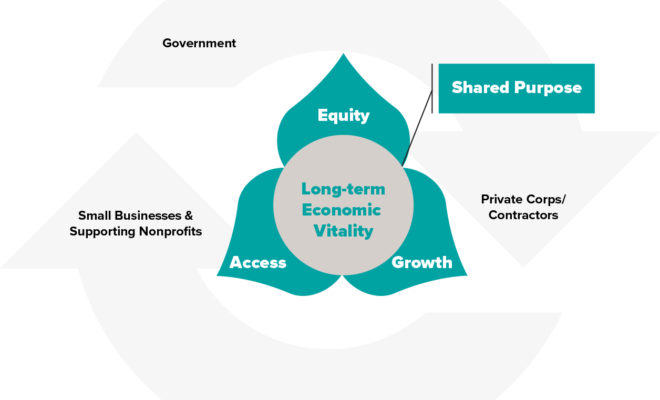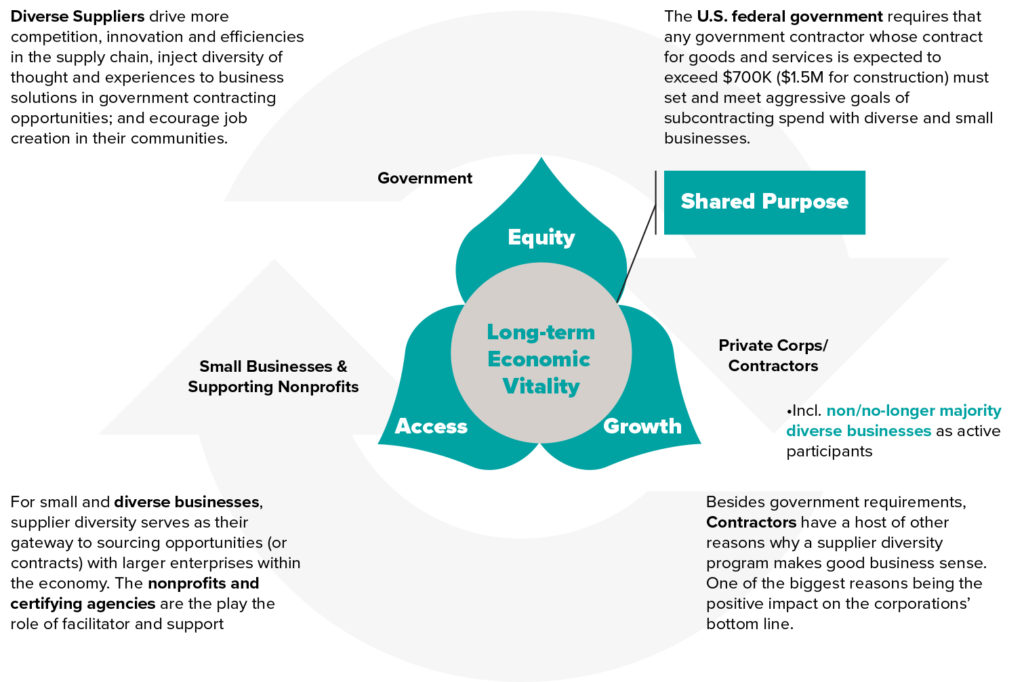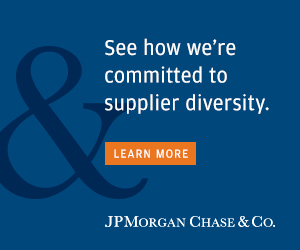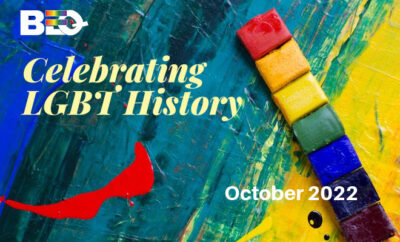
Corporate
Decoding the Diverse Supplier Ecosystem: A New Era, A New System
By Robin Dillard and Ciara Lilly
History
Supplier Diversity has its roots in the American Civil Rights legislation of the 1960s. Before the Civil Rights Act of 1964, a 1961 Executive Order by President John F. Kennedy amended a federal order to take affirmative action into consideration for federal contracting. In 1968, a combination of social, political and economic conditions compelled companies like IBM, General Motors, AT&T and others to launch their Supplier Diversity Programs.
Supplier Diversity
The notion of supplier diversity has evolved since its inception over a half-century ago. What started as an executive order to take affirmative action into consideration for federal government contracting turned into the catalyst for a movement. Today, supplier diversity is a crown jewel of many modern-day corporate procurement functions.
A Supplier Diversity program is a proactive business program which encourages the use of minority-owned, women owned, veteran owned, LGBT-owned, service disabled veteran owned, historically underutilized business and Small Business Administration (SBA)-defined small business concerns as suppliers.
But much has changed as well. Without proper context and insight, the world of supplier diversity can feel elitist, fraught with uncertainty and arguably a waste of time and resources for the average small business owner. There can be a sense of fatigue on the part of advocates and corporate diversity professionals who are balancing return on investment and making a meaningful impact.
To make sure we continue to move forward — even accelerate — toward the long-term and intended outcomes for supplier diversity, we must get clear on what we’re doing, pay attention to what’s happening and collectively move toward an inclusive future by design.
Two truths about supplier diversity: Shared purpose, generative ecosystem
Seeing the diverse supplier system as a living ecosystem first is essential. It can help both business owners and contractors (“corporates”) understand its biology, providing a sense of agency for the former and new lines of sight to new talent, ideas and resources for the latter.
Political, demographic, economic, environmental and social forces have always motivated and/or influenced and shaped how each participant operates within the diverse supplier ecosystem. Over time, participants self-organize, evolve their capabilities and roles and tend to align themselves with the directions set by its leaders or representative governing body. Meetings, forums, committees, events and other activities are all intended to spur business opportunities for the diverse suppliers. This ecosystem has grown from the outset of those early supplier diversity initiatives (e.g., business development councils, the growing interest of the diverse business owner community) and have become increasingly complex.
A Diverse Supplier Ecosystem is a business ecosystem that is the network of organizations — including suppliers, distributors, customers, competitors, government agencies, corporations, nonprofits and so on — spanning across industries involved in Supplier Diversity through both competition and cooperation.
Make no mistake, the steadfast organizing principle for the diverse supplier ecosystem is long-term economic vitality, a shared purpose that requires a generative system of equity, access and growth. “Shared value ecosystems are inherently generative,” says Lynn Reyes, strategist and business value artisan. “Healthy and inclusive ecosystems have exponential power to create net new value for its participants and the system itself.”
Throughout the diverse supplier ecosystem, the network of suppliers, nonprofits, government agencies and contractors organize to identify potential targets, develop (relationships or capabilities) and engage for business. There are literally millions of small diverse businesses eligible to participate, an untold number of potential business opportunities and year-round events at national, regional and local levels.
Then and Now
Let’s briefly revisit the history driving the need for supplier diversity then and still today: Government wants to promote long-term economic vitality (e.g. job creation, improved economic well-being in the community, etc.) through equity (in particular), access and growth across the American economy through government spending.
In other words, the government buys goods and services through contractors that demonstrate their alignment with the government’s need for equity and fairness, but it doesn’t end there.
Unfortunately, now there are:
- disparate systems and limited supporting infrastructure
- limited supply of known, certified diverse suppliers
- primarily human-dependent, manual process for matching businesses to potential opportunities and resources
The change in system context has far outpaced the change of the various business and operating models of ecosystem participants. The result: complexity exacerbated. Visibility obscured. Perceptions skewed. But this can be remedied through engagement.
Even so, the upside is compelling. The impacts on small businesses and the benefits to ecosystem participants could be exponential if the engagement is inclusive.
Feeling equal to the task, having certainty on your plan and reclaiming your time and resources means you know the answers to three key questions:
- What nonprofits are my targets aligned with and why?
- What’s the focus of my target’s diverse supplier initiative?
- How do I differentiate my business and capabilities for the right kind of visibility throughout the ecosystem?
The new era demands new models for inclusive sourcing
Now that we’ve talked about the living ecosystem that is supplier diversity, consider three levels of leadership:
- Wear your fiduciary hat—you’re playing the role of watchdog focused on compliance—you must answer the mail.
- Put on your strategy power suit—you’re setting goals and mobilizing resources to execute and execute well—it’s all about the Benjamins.
- Put on your generative specs—this is the legacy building perspective, interrogating today’s reality in anticipation of tomorrow’s challenges—you are the “sense makers”.
It’s a new time. In fact, everyone will need to become sense makers. Why? Aligning the contractors’ (or corporates’) need to grow into the future with the government’s need for equity and small business owners’ need for access to the system’s purpose — long-term economic vitality — will bring about the win-win-win.
From supplier diversity to inclusive sourcing
Can we find better ways of identifying our targets (customer, partner or supplier), developing relationships and engaging for opportunities? The simple answer is yes. New models and new systems must emerge from a new mindset if we are to realize the upsides of inclusive sourcing. Make room for the generative system to work organically— at all levels. This also means distributing more responsibility throughout the supply chain and reduce fear of missing out.
The data is irrefutable and 2045 is not that far away. The narrative has changed but it’s just white noise. If we want to have a thriving and robust economic future, we’ll have to fine tune the frequency in order to realize Inclusive Sourcing 2045 together.
The narrative has changed but it’s just white noise. If we want to have a thriving and robust economic future, we’ll have to fine tune the frequency in order to realize Inclusive Sourcing 2045 together. - Decoding Supplier Diversity Share on XThe primary motivation
The Top 100 Contractors Report is a report developed annually by the U.S. General Services Administration as part of its tracking of U.S. Federal Government Procurement—where and how it acquires goods, services (notably construction), and interests in real property. In fiscal year 2017, the U.S. Federal Government spent a total of $282,630,006,457.23 with the top 100 contractors. Being a supplier to the U.S. Federal Government is big business.
The Office of Federal Contract Compliance Programs (OFCCP), part of the U.S. Department of Labor, is tasked with carrying out the interpretation and enforcement of supplier diversity compliance with federal contractors and subcontractors. Their mission is based on the underlying principle that employment opportunities generated by Federal dollars should be available to all Americans on an equitable and fair basis.
During 2019, Higher Ground Consulting in conjunction with the Business Equality Network, LLC (and pürEpiphany) will be creating a series of articles that will address how to thrive in the diverse supplier ecosystem in anticipation of Inclusive Sourcing 2045. These articles will pay attention to the supplier’s need to navigate the ecosystem quickly, the advocate and buyer community’s need to reach a broader pool of qualified and prepared diverse suppliers and the nonprofit organizations’ ability to grow their national, regional and local membership.
Business Equality Pride (BEQPride) is the first publication from the BEQ family of national print and digital magazines exclusively addressing the needs of LGBTQ small-to-medium sized businesses, entrepreneurs and professionals.


















0 comments